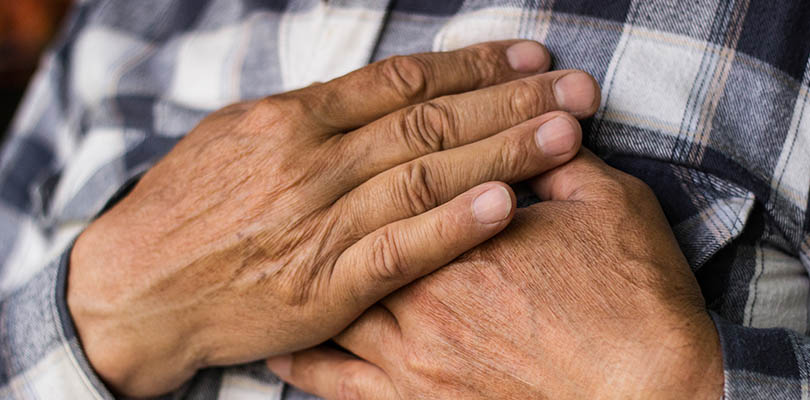Cystic Fibrosis Treatment
Cystic fibrosis is a genetic disorder that impacts the lungs, digestive system, and other major organs of the body. Specifically, it impacts the cells that make mucus and sweat. This may not sound incredibly serious, but it actually has a significant impact on the body.
In individuals with healthy secretions, the tears and sweat work to lubricate various areas of the body. However, in individuals with cystic fibrosis, the secretions are thick and sticky. This causes the substance to get stuck in various passageways, which ultimately impact the pancreas and lungs. This is why cystic fibrosis treatment is essential for patients.
While individuals with cystic fibrosis will require lifelong care, they can have an incredibly high quality of life. The focus on the treatment plan is to find options that work best for the individual. Here, we will discuss some of the most common treatment options for people living with cystic fibrosis.
Medications
There are a variety of medications that may be taken to help relieve some of the more uncomfortable symptoms of cystic fibrosis. Common medications include:
- Antibiotics for chronic infections that attack the lungs.
- Anti-inflammatory medications to help reduce inflammation that commonly impacts the airway.
- Mucus-thinning medications that assist in coughing up mucus, which can help improve lung function.
- Inhaled medications called bronchodilators that relax the muscles and allow you to breathe easier.
- Oral pancreatic enzymes that assist in absorbing nutrients.
In addition to the medications described here, there is a newer drug called ivacaftor (Kalydeco) which may be prescribed to help people gain weight and improve their lung function. Individuals must be at least six years old and meet certain age and weight requirements.
You should always make sure to consult with your doctor about different medications that are available.
Chest Physical Therapy
Chest physical therapy is one of the most common treatments for people living with cystic fibrosis. It’s a treatment plan that involves loosening the thick mucus in the lungs so people can cough it up more easily. People usually complete this treatment several times per day.
While there are a few different methods that are used, one of the most common ones is simply cupping the hand and clapping it against the front and back of the chest. However, people may also use a vibrating vest or a treatment mask for breathing into.
Pulmonary Rehabilitation
Pulmonary rehabilitation is a long-term treatment plan that includes multiple parts. Common aspects of pulmonary rehabilitation treatment include:
- Exercise
- Diet
- Counseling
- Education
Additional Procedures
Because cystic fibrosis can impact various parts of the body, there are additional procedures that may need to be done in order to curb some of the symptoms and provide comfort to the patient. Common procedures include the following.
Feeding Tube
Because cystic fibrosis directly impacts the body’s ability to absorb nutrients, your doctor may require you to use a feeding tube on a temporary basis.
When you have bad body odor, identifying what is causing it is only the first step to fighting back against it. Read on about bad body odor here.
Oxygen Therapy
In order to prevent high blood pressure in the lungs, oxygen therapy may be required. This involves the patient breathing in pure oxygen in order to raise oxygen levels in the blood.
Nasal Polyp Removal
Because cystic fibrosis already takes a toll on your ability to breathe, any slight obstructions should be removed. Nasal polyps aren’t usually tolerated well by patients with cystic fibrosis so they will need to be surgically extracted right away.
Endoscopy
In order to remove some of the built-up mucus in the airway, an endoscope may be used. This provides temporary relief to patients who have a considerable amount of buildup that may be interfering with their ability to breathe.
Bowel Surgery
In the event that part of the bowel has folded in on itself or has become blocked, bowel surgery may be required. Keep in mind, cystic fibrosis impacts various parts of the digestive tract so these areas of the body should be monitored for changes.
Lung Transplant
Because cystic fibrosis can significantly impact the lungs, a transplant may become necessary. This is an incredibly invasive procedure. In some instances, it’s not cystic fibrosis that leads to a transplant, but rather some of the issues that stem from it, such as chronic infections.
Additional Tips
There are other ways you can help ensure that you have a better quality of life if you have cystic fibrosis. Tips include:
- Monitor your nutritional intake
- Don’t smoke
- Exercise regularly
- Keep immunizations up-to-date
- Practice good hygiene
- Attend all your medical appointments
- Therapy
- Build a solid support network
Your doctor can discuss additional things you can do to live a more comfortable life. Always be sure to consult with your doctor about cystic fibrosis treatment options.
Overview
People living with cystic fibrosis can have a much higher quality of life than individuals who were diagnosed a few decades ago. With the treatment plans listed here, there are opportunities for people to find relief from some of the most difficult symptoms associated with the illness.
If you or someone you know needs additional information regarding cystic fibrosis treatment plans, reach out to your doctor to start the discussion.







